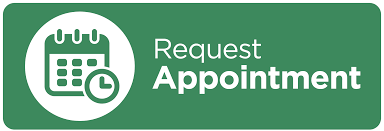
Cognitive biases are patterns of thought that can distort our perceptions, judgments, and decision-making. They are flaws in our thinking that can lead us to make errors, misunderstandings, and irrational choices. The study of cognitive biases is an important area of research that has implications for many fields, including psychology, economics, politics, and business. In this article, we will explore the science of cognitive biases, including some of the most common biases and strategies for mitigating their effects.
What are Cognitive Biases?
Cognitive biases are mental shortcuts or heuristics that help us make quick decisions based on limited information. These shortcuts can be useful in some situations, but they can also lead to errors in judgment and decision-making. For example, the confirmation bias is a common cognitive bias where people tend to seek out information that confirms their preexisting beliefs, while ignoring information that contradicts those beliefs. This can lead to a distorted view of reality and can make it difficult to change one’s mind.
Types of Cognitive Biases
There are several different types of cognitive biases, each with its own set of characteristics and effects. Here are a few of the most common types of cognitive biases:
- Confirmation bias: the tendency to seek out information that confirms one’s preexisting beliefs and ignore information that contradicts those beliefs.
- Availability heuristic: the tendency to judge the likelihood of an event based on how easily it comes to mind.
- Anchoring bias: the tendency to rely too heavily on the first piece of information encountered when making decisions.
- Hindsight bias: the tendency to believe, after an event has occurred, that one would have predicted or expected the outcome.
- Halo effect: the tendency to generalize positive or negative traits from one area of a person’s life to all areas of their life.
Effects of Cognitive Biases
Cognitive biases can have a range of effects, from mild misunderstandings to serious errors in judgment. For example, the confirmation bias can lead to polarized beliefs and a lack of willingness to consider alternative viewpoints. The availability heuristic can lead people to overestimate the likelihood of rare events, such as plane crashes or terrorist attacks. The anchoring bias can lead to flawed negotiation strategies, where one party makes an initial offer that anchors the negotiation in a particular direction. The hindsight bias can lead people to believe that they could have predicted events that were actually unpredictable. The halo effect can lead to unfair judgments of people based on one characteristic, such as physical appearance.
Mitigating the Effects of Cognitive Biases
While cognitive biases are a natural part of human thinking, there are strategies that can be used to mitigate their effects. Here are a few examples:
- Awareness: simply being aware of the existence of cognitive biases can help people recognize when they may be falling prey to them.
- Challenge assumptions: actively challenging one’s own assumptions and seeking out alternative viewpoints can help mitigate the effects of confirmation bias and other biases.
- Slow down: taking the time to consider information carefully and deliberately can help reduce the effects of cognitive biases such as the availability heuristic and the anchoring bias.
- Consider the opposite: deliberately considering the opposite of one’s beliefs or assumptions can help reduce the effects of cognitive biases such as the confirmation bias and the hindsight bias.
- Seek feedback: seeking out feedback from others can help mitigate the effects of the halo effect and other biases by providing alternative perspectives.
Conclusion
Cognitive biases are a natural part of human thinking, but they can lead us to make errors in judgment and decision-making. Understanding the science of cognitive biases and learning strategies for mitigating their effects can be an important component of critical thinking and decision-making.








